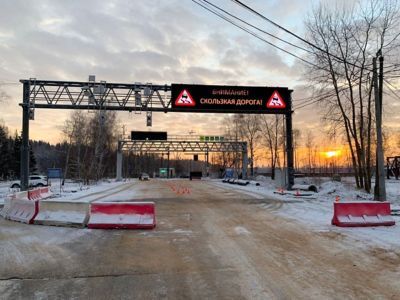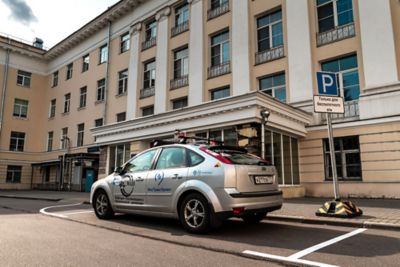-
-
Accédez au logiciel étudiant gratuit
Ansys donne les moyens à la prochaine génération d'ingénieurs
Les étudiants ont accès gratuitement à un logiciel de simulation de classe mondiale.
-
Connectez-vous avec Ansys maintenant !
Concevez votre avenir
Connectez-vous à Ansys pour découvrir comment la simulation peut alimenter votre prochaine percée.
Pays et régions
Espace client
Support
Communautés partenaires
Contacter le service commercial
Pour les États-Unis et le Canada
S'inscrire
Essais gratuits
Produits & Services
Apprendre
À propos d'Ansys
Back
Produits & Services
Back
Apprendre
Ansys donne les moyens à la prochaine génération d'ingénieurs
Les étudiants ont accès gratuitement à un logiciel de simulation de classe mondiale.
Back
À propos d'Ansys
Concevez votre avenir
Connectez-vous à Ansys pour découvrir comment la simulation peut alimenter votre prochaine percée.
Espace client
Support
Communautés partenaires
Contacter le service commercial
Pour les États-Unis et le Canada
S'inscrire
Essais gratuits
ANSYS ADVANTAGE MAGAZINE
July 2021
Transportation Systems Get Smart
INTELLIGENT TRANSPORTATION SYSTEMS (ITS) can already help alleviate traffic congestion, make public transportation more efficient and manage infrastructure use by collecting and sharing traffic and public transport data. In the near future, ITS is expected to be a key component of smart cities by helping people request autonomous vehicles, and then efficiently and safely routing them to their destinations. Together, ITS and autonomous vehicles are expected to improve safety, reduce cybersecurity risks and reduce traffic, which would help improve the environment. To realize that vision, intelligent transportation systems must be thoroughly vetted by simulating the interaction of infrastructure and vehicle sensors under various conditions.
“We decided to use Ansys software solutions for this project because of several very important advantages. First, Ansys is undoubtedly one of the world leaders in this area.”
The Department of Organization and Traffic Safety of the Moscow Automobile and Road Construction Technical University (MADI) was one of the first organizations in Russia to work on intelligent transport systems. It began with a joint project involving the Ministry of Transport of the Russian Federation, MADI, the Russian Association of Motor Insurers (RAMI) and United Telecom. They conducted a study of domestic and foreign traffic enforcement cameras, which made it possible to amend the Administrative Violations Code of the Russian Federation and other bylaws. After that, modern automated traffic control systems appeared, and by 2010 MADI had its own ITS testing ground. In 2014, MADI specialists developed the Russian cooperative intelligent transport systems (C-ITS) to inform drivers of potential roadway problems. They also tested vehicle-to-vehicle (V2V), vehicle-to-infrastructure (V2I) and infrastructure-to-vehicle (I2V) communication options at the testing ground. Now, they’ve introduced simulation to advance their testing.
Smart Infrastructure Supports Autonomous Vehicles
According to MADI experts, the development of a safe unmanned transportation system requires not only appropriate vehicles, but also a suitable road infrastructure. To that end, MADI has developed a Digital Road Model concept, which, together with cooperative and classic ITS, will help ensure traffic safety and increase its efficiency with highly automated vehicles.
The Russian infrastructure for unmanned vehicles is also advancing thanks to the Safe High-Quality Motorways project. The goal of this national project is to improve the state of existing roads and expand ITS implementation, including developing policy papers on the implementation of unmanned vehicles. Within the framework of this project, MADI is developing national standards and regulations for its Digital Road Model, including digital infrastructure requirements to support the movement of highly automated vehicles and data requirements to increase the efficiency of highly automated vehicle navigation via lidar and neural network algorithms. The Digital Road Model will use this data to recognize road markings and signs. In the future, the model will expand to help unmanned vehicles navigate, provide speed limit data and map optimal routes based on traffic loads. The project is slated to be implemented for federal roads between 2025 and 2030.
General view of MADI Smart Road test ground, where the unmanned vehicle tests are carried out.
Simulating Infrastructure Projects
MADI, together with its partner FAO ROSDORNII (Russian Road Research Institute), are developing infrastructure projects as part of the development of a Digital Road Model. One project is related to providing additional information for highly automated vehicles. It includes developing a prototype digital model of the MADI Smart Road testing ground. Using Ansys VRXPERIENCE Driving Simulator software, university specialists developed a polygon model that includes the same parameters as the real road, complete with signs and road markings. A virtual traffic light was developed along with a recommended speed service that allows the vehicle to adjust its speed so it can pass smoothly through green lights. This increases traffic light throughput and saves time while reducing the risk of accidents and congestion.
One of the main tasks of this project is to develop scenarios for the movement of highly automated vehicles in both normal and abnormal conditions, such as construction, bad weather and emergency situations like technical malfunctions or the deterioration of a driver’s health. Another task is to develop scenarios in the background to support drivers of highly automated vehicles.
Using the test ground model, MADI specialists are conducting a study to determine the level of accuracy when detecting dynamic objects required for the Digital Road Model so that, when transmitting this information to an unmanned vehicle, it can effectively be used in its control loop. They chose to experiment with seven scenarios in which it was impossible to obtain all the necessary information using the vision sensors of the highly automated vehicle, which could lead to an accident.
Some of the experiments were carried out in the VRXPERIENCE virtual environment, including a scenario in which one unmanned vehicle (or two in some scenarios) does not “see” part of the road due to visual obstacles and must reconstruct it. At the same time, due to lack of information, an emergency situation may arise with other road users, which creates dynamic obstacles. The Digital Road Model must collect information from other sources to detect dynamic obstacles and transmit that data to the highly automated vehicle. This experiment also makes it possible to determine the level of accuracy that is needed for the Digital Road Model to determine the trajectories of obstacles in order to avoid an accident.
MADI specialists used Ansys simulations to set up accident scenarios. Because an accident is a confluence of many circumstances that have to be taken into account, a scenario can be quite complex. The engineers needed to create conditions under which both vehicles could not see each other until they were very close to colliding. The creation of these conditions via simulation reduced the number of physical experiments. The use of Ansys VRXPERIENCE allowed the engineers to reduce the time it took to complete their analyses by about 20%.
“Ansys VRXPERIENCE is a very advanced product that allows you to solve most of the challenges of the project in a single system and not have to switch to other solutions when new problems arise.”
“We decided to use Ansys software solutions for this project because of several very important advantages. First, Ansys is undoubtedly one of the world leaders in this area,” says Andrey Vorobyov, deputy head of the Organization and Traffic Safety Department at MADI, and Deputy Head of the MADI Competence Center for ITS. “Second, they have high-quality technical support in Russia, provided by CADFEM CIS group, which is especially important when working with complex products. Finally, Ansys VRXPERIENCE is a very advanced product that allows you to solve most of the challenges of the project in a single system and not have to switch to other solutions when new problems arise. Of course, this allows you to save much time, money and other resources, including those needed for training.”
VRXPERIENCE was also used for initial hypothesis testing to eliminate those hypotheses that were not working. For each scenario of the experiment, three hypotheses were considered and the best option was selected.
Virtually Testing Unmanned Vehicles
The virtual training ground, developed by MADI in VRXPERIENCE, is also used to test the basic functions of an unmanned vehicle before launching.
One such project is based on a Parkon — a car that patrols the Moscow parking space management system. It automatically records the plate numbers of cars parked on its predetermined route and detects violations related to parking rules. To create an unmanned Parkon, a passenger car was automated and given access to public roads. The project was carried out together with MADI partners Moscow Urban Transport Research and Design Institute and RosdorNII. Mostransproekt also created a dispatch system, which helped to determine where the vehicle was located and assess its activity, including the number of parking violations it had detected and how many tickets were issued.
MADI uses Ansys VRXPERIENCE to work out various scenarios for the Parkon system. The results of these studies will form the basis for a software update to Parkon this spring. The first version of the software reacted rather sharply to obstacles while driving. On the one hand, this provided the necessary level of road safety, but, on the other hand, did not correspond to the high level of driver comfort. VRXPERIENCE allowed specialists to simulate various obstacle response algorithms and find the most comfortable option for the driver with the required level of safety.
Thanks to the benefits inherent in simulation, MADI’s virtual training ground continues to quickly advance. The university continues to work with private and public organizations to usher in a safer, cleaner, more convenient transportation system that combines automated vehicles and smart infrastructure.
Commençons
Si vous êtes confronté à des défis d'ingénierie, notre équipe est là pour vous aider. Forts de notre expérience et de notre engagement en faveur de l'innovation, nous vous invitons à nous contacter. Collaborons pour transformer vos obstacles techniques en opportunités de croissance et de réussite. Contactez-nous dès aujourd'hui pour entamer la conversation.


